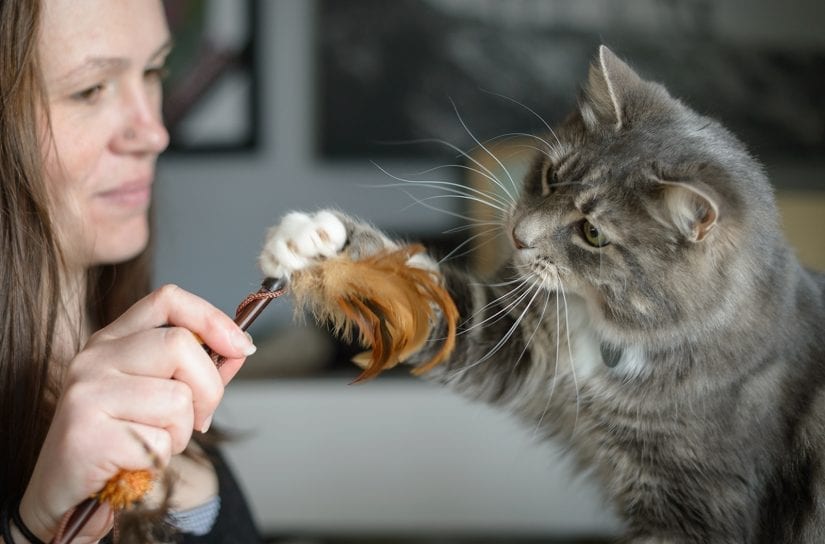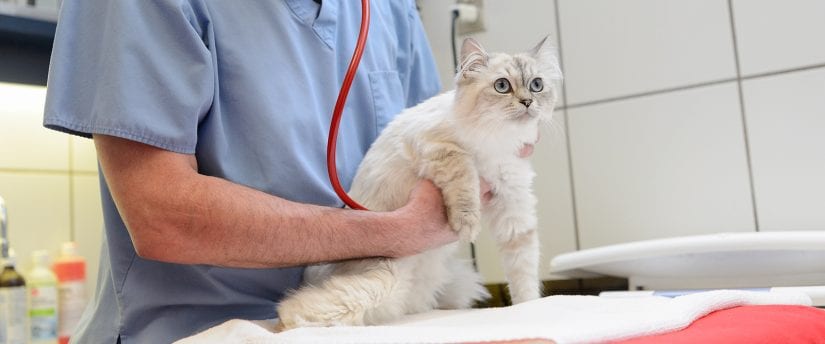Pet care & behaviour
Cats are wonderful companions. Each has a unique personality – just like people!
Some are shy and quiet while others are outgoing and social; but no matter the personality of your cat, they always rely on you as a guardian to provide a good home with what they need to be happy. Remember, a healthy cat is a happy cat!
Typical life span for a cat
- 13 – 20 years
How to keep your cat happy and healthy

Cat food and feeding
Kittens need good quality kitten food when they’re weaned. Adult cats do best on a mixture of good quality dry kibble and canned food. Feeding guidelines provided on the bag can help you determine how much your kitten or cat should eat in a day.
It is common for most cats to eat two to three meals a day. Feed the last meal of the day right before bedtime. An adult cat will sleep throughout the night. Kittens may need more meals a day.
Some cats need special diets. Ask your vet for a recommendation for your cat.
Your cat must have access to fresh water all the time. Change the water daily and wash out the bowl regularly.

Cat grooming, teeth and nail trimming
Choose a pet service business that prioritizes your cat’s welfare. Learn what to ask so you can confidently choose the right pet care provider.
Grooming
Brush your cat on a regular basis, especially if they are long-haired. Regular brushing prevents hair from matting and removes loose hair. It also will help with hairballs.
Teeth
To keep your cat’s teeth healthy and tartar free, they need to be brushed daily. Buy a special toothpaste and finger brush from your local pet supply store or at your vet clinic. Do not use human toothpaste.
Nails
Nails need regular trimming, usually once a month or as needed. Take care not to cut the blood vessel (the quick) that runs through each nail. Cats who go outside do not need their nails trimmed. They need their nails to climb and defend themselves. If you prefer not to cut your own cat’s nails, a veterinarian can do this for you for a small fee.
Declawing cats
The practice of declawing cats is banned in B.C., unless it is necessary as an appropriate medical therapy. It is also banned in Australia, New Zealand, Israel, Brazil, the United Kingdom, parts of Europe and some cities in California.
Cats’ nails are not like fingernails — they’re attached to the bone. Declawing is a serious surgery. It’s like removing a part of your finger at the knuckle.
Read the BC SPCA Position Statement on Cosmetic and Other Non-Therapeutic Alterations (PDF).
*If your cat is scratching furniture, learn what to do.
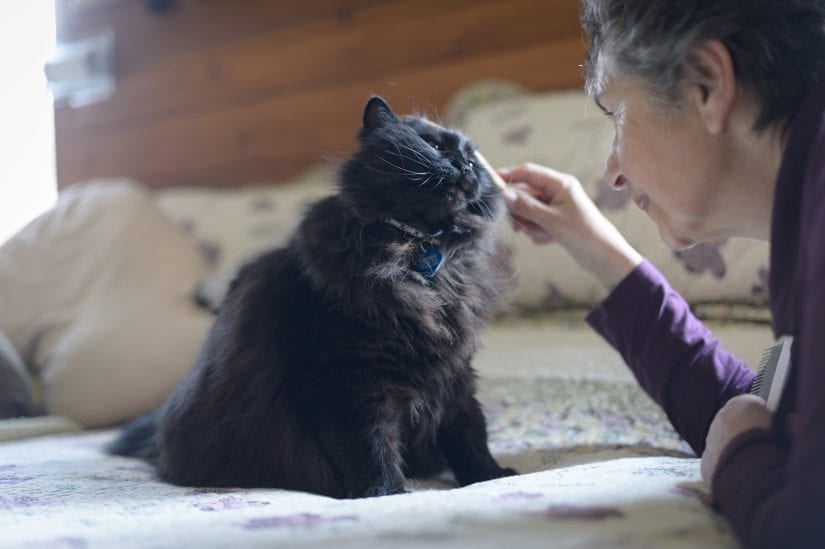
Identification (ID) for your cat
Nobody plans to lose a pet. Prepare for the unexpected and ensure your cat has two forms of identification.
Indoor cats vs outdoor cats
The BC SPCA recommends that cats be indoors, however, some cats get frustrated indoors and may enjoy outdoor time. Whether you choose to let your cat out or keep them in, know how to provide them with the best environment to keep them happy and safe.
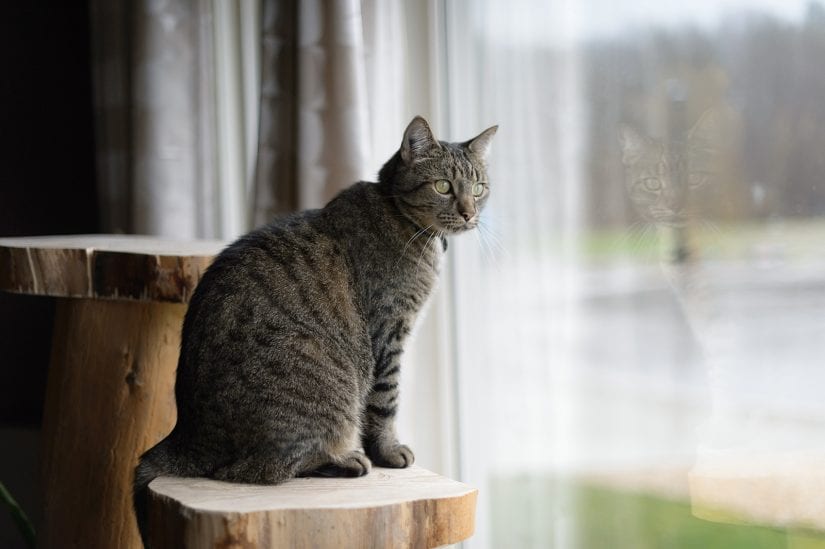
Medical care is important for your cat
Take your cat to see a vet when you first get your cat. After the initial visit with the vet, you may only need to go back once a year for a check-up and vaccinations. Kittens will need to go back more often at first for vaccines.
It is also important to have your pet spayed or neutered to prevent unwanted litters. There are also many behavioural and health benefits to sterilization. Learn more about the benefits of spaying or neutering your pet.
Over time, watch for lumps and bumps on your pet. Also pay attention to signs of your cat not eating or a change in their behaviour. If you notice anything different talk to your vet.
Find a veterinarian in your area.
Learn how to make your kitten or cat’s vet visit less stressful.
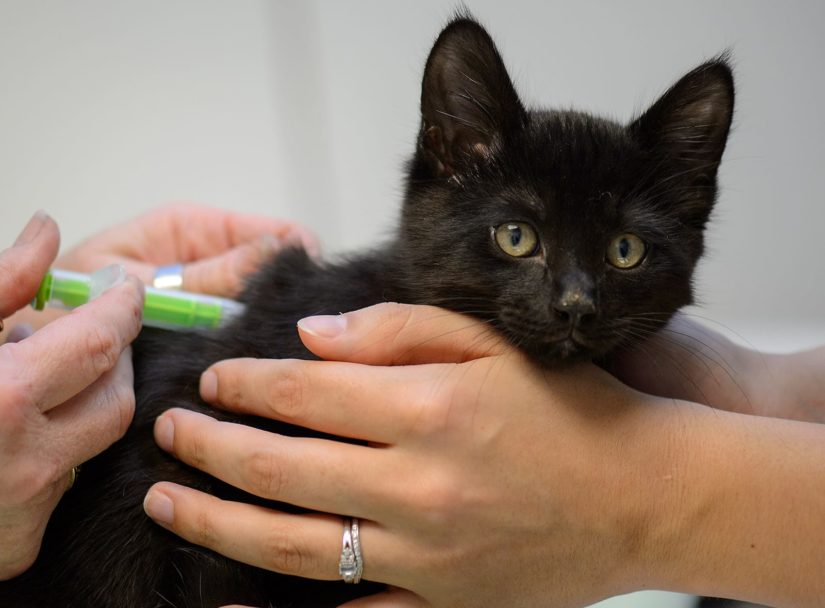
Playtime is a special time with your cat
Cats love to play, explore, run around, use a scratching post and spend time with you. These are all essential activities for cats. Set up your home so your cat can explore, run and scratch on a scratching post.
Make time in your day to play with your cat with a variety of toys, rather than your hands. Learn what to do if your cat or kitten is biting and scratching your hands.
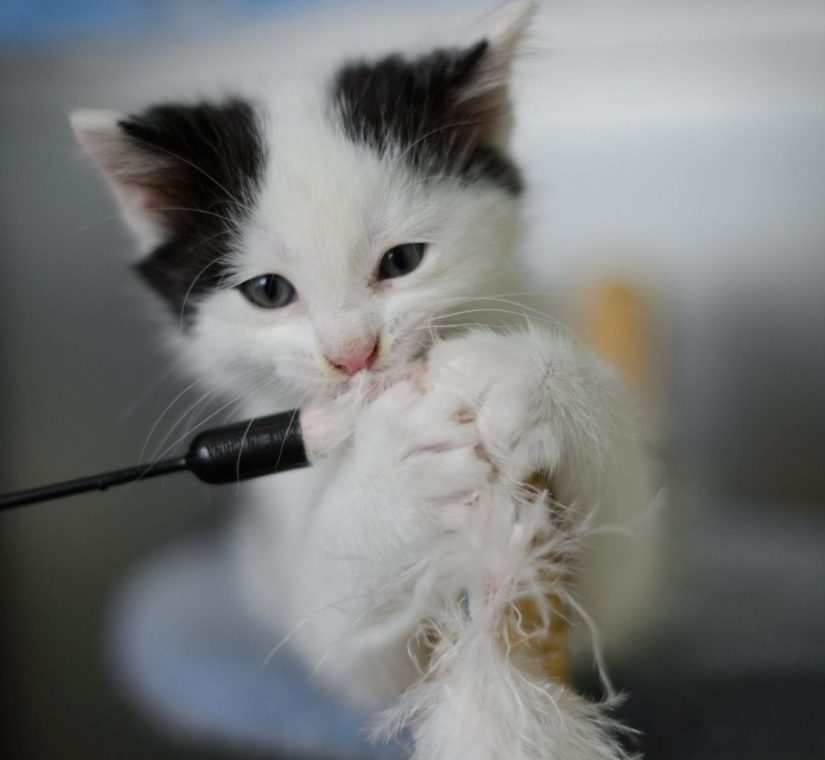
Further resources for cat care and behaviour issues:
Welcoming a new cat into your home
Introducing your new cat to your resident cat
Is this new behaviour?
Cats learn where to go to the bathroom and how to cover it as kittens. It’s easy to teach cats to use a litter box because they want to be able to bury their waste. If they stop using their box it’s a concern. They don’t stop out of spite or disinterest; there’s always a reason.
Have you taken your cat to see a vet?
If not, get him checked by a vet, especially if he’s always used his litter box and now he refuses to use it. If so, and if your vet says he’s healthy, ask how you can help your cat or for a referral to a professional.
Try these cat litter box tips:
1.) Location, location, location
Make sure the cat’s litter box is in a quiet location. Place it in a corner where no one can surprise or scare him and somewhere that isn’t busy. Keep it away from his food.
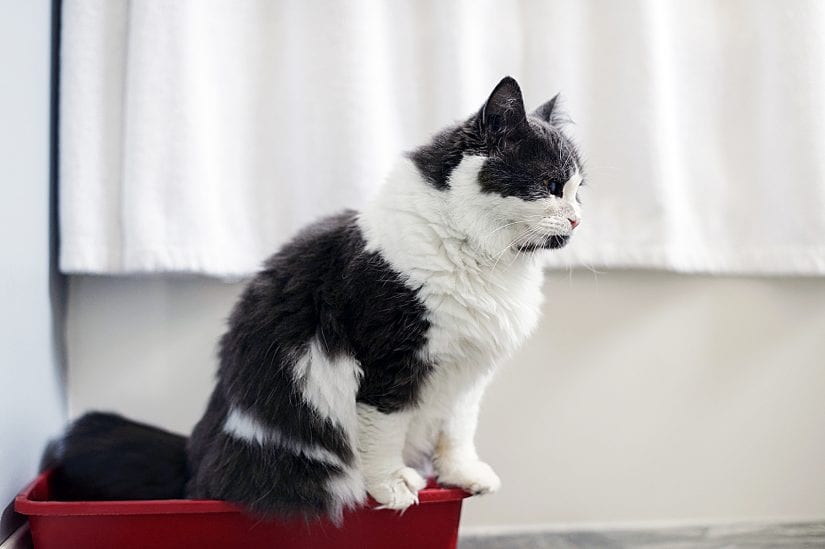
2.) Size does matter
What size is the right size litter box for your cat? Rule of thumb is litter box should be one and a half times longer than your cat. Go bigger if you’re not sure!
3.) Type of box
Think of what your cat needs, not what you prefer. A covered litter box holds the smell in, but this could prevent the cat from using his box. Boxes with high sides might be too difficult for older cats to get into or out of. Self-cleaning boxes might be too scary for some cats. And some cats don’t like plastic liners. A simple box at least four inches deep, the right length for your cat and without a cover is ideal.
4.) How many boxes
If you have more than one cat you should have a box for every cat, plus one extra.
5. ) Litter type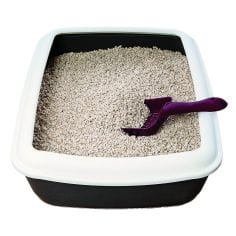
Try different types of litter to see what your cat likes. Put four litter boxes out with different types of litter and see which one he chooses most often. Try different amounts of litter in the box, as some like deep litter while others might not. Stop using the freshener you’ve been using and when you find a litter he likes, stick with it.
6.) Clean it
For many cats a clean litter box is important. Try scooping it twice a day and cleaning it once a week. Some cats may not use it if there’s anything in it.
7.) No bad cats
Remember, you may think your cat is being bad and doing it on purpose. This isn’t true! There is always a reason why your cat is missing the mark. Find out why and help him, never yell or spank your cat.
Find more on litter box issues in our fact sheet Litter box problems treating and reducing cat inappropriate elimination (PDF) and in this video on how to get your cat used to their litter box.
